Near the end of my last post, I used a photo of an exotic weed to make a point (albeit a minor one) about plant life at the edge the Western Australian desert. This entry, about what we saw on our drive back to the coast on the afternoon of September 13, 2013, is itself named after a weed. We have a very similar European invader back home in Canada, where we call it by the unlovely name of Viper's Bugloss (Echium vulgare), but it's cousin's name in Australia is far more evocative: Paterson's Curse (Echium plantagineum).
By now, we had left the edge of the desert behind us and were driving back through, mostly, agricultural land, with wildflowers confined pretty much to the road edge.
Paterson's Curse is bound by no such restrictions. Of course it does grow among the wildflowers and tussock grasses along the roadsides, where I could get a close-up of its individual flowers. It is a member, by the way, of the borage family (Boraginaceae), and gets is Aussie name, supposedly, from a certain Paterson (either male or female, depending on which account you read) who brought the plant out from England in the 1880s (where it is also a weed; it hails from the Mediterranean) to beautify his (or her) garden, only to see it take over the surrounding countryside like kudzu on steroids.
Today, it grows in great abundance in farmers' fields, much to the annoyance (I suspect) of the farmers. It is, to some degree, toxic to livestock, and has was been responsible for a number of deaths of both horses and cattle.
Even in this heavily farmed area, we found a variety of native wildflowers sharing the road verges. This is one of the native 'buttercups' (Hibbertia sp.).
The west is rich in grevilleas, handsome and highly variable members of the protea family (Proteaceae) popular with both gardeners and nectar-feeding birds. This one, Catkin Grevillea (Grevillea synapheae), gets its scientific name because its flattened, leaflike branches recall a related genus, Synaphea (scroll down to see one).
The flowers framing the grevillea in the previous photo are, I believe, Large-flowered Baeckea (Baeckea grandiflora), a member of the myrtle family (Myrtaceae).
Here's another of the grevilleas, and this one really is spectacular: Pink Pokers (Grevillea petrophiloides), one of the prettiest members of its genus.
Here is yet another: Round-leaf Grevillea (Grevillea teretifolia).
I believe I have correctly identified this, though the range of Wiry Honey-Myrtle (Melaleuca filifolia) is somewhat to the north. The bright purple flowers and long, wiry leaves seem to be a match. Mind you, there are lots of Melaleuca species out there.
Orange Immortelles (Waitzia acuminata), which we had seen earlier only as highly attractive buds, we're now beginning to open.
I have this one down as Keraudrenia hermanniifolia. It cetrainly seems tobe a member of the genus Keraudrenia, a member of the mallow family (Malvaceae), but I am less certain about the species.
Common Cotula (Cotula australis) is one of a number of species in the composite or daisy family (Asteraceae) that are, as botanists put it, disciform - meaning that they lack ray florets (the things that look like petals on a daisy). There are other disciform composites in Australia, so I may have this one wrong. Are any Australian botanists reading this?
Not every native plant along the roadside bears eye-catching flowers. This is a species of Lomandra, an Australian genus in the Asparagaceae. Gardeners plant them for their foliage, but their flowers are unspectacular.
Similarly unspectacular are the flowers of the peculiarly Western Australian plant family Anarthriaceae, relatives of sedges and rushes.
By now, we had left the edge of the desert behind us and were driving back through, mostly, agricultural land, with wildflowers confined pretty much to the road edge.
Paterson's Curse is bound by no such restrictions. Of course it does grow among the wildflowers and tussock grasses along the roadsides, where I could get a close-up of its individual flowers. It is a member, by the way, of the borage family (Boraginaceae), and gets is Aussie name, supposedly, from a certain Paterson (either male or female, depending on which account you read) who brought the plant out from England in the 1880s (where it is also a weed; it hails from the Mediterranean) to beautify his (or her) garden, only to see it take over the surrounding countryside like kudzu on steroids.
Today, it grows in great abundance in farmers' fields, much to the annoyance (I suspect) of the farmers. It is, to some degree, toxic to livestock, and has was been responsible for a number of deaths of both horses and cattle.
Even in this heavily farmed area, we found a variety of native wildflowers sharing the road verges. This is one of the native 'buttercups' (Hibbertia sp.).
The west is rich in grevilleas, handsome and highly variable members of the protea family (Proteaceae) popular with both gardeners and nectar-feeding birds. This one, Catkin Grevillea (Grevillea synapheae), gets its scientific name because its flattened, leaflike branches recall a related genus, Synaphea (scroll down to see one).
The flowers framing the grevillea in the previous photo are, I believe, Large-flowered Baeckea (Baeckea grandiflora), a member of the myrtle family (Myrtaceae).
Here's another of the grevilleas, and this one really is spectacular: Pink Pokers (Grevillea petrophiloides), one of the prettiest members of its genus.
Here is yet another: Round-leaf Grevillea (Grevillea teretifolia).
I believe I have correctly identified this, though the range of Wiry Honey-Myrtle (Melaleuca filifolia) is somewhat to the north. The bright purple flowers and long, wiry leaves seem to be a match. Mind you, there are lots of Melaleuca species out there.
Orange Immortelles (Waitzia acuminata), which we had seen earlier only as highly attractive buds, we're now beginning to open.
I have this one down as Keraudrenia hermanniifolia. It cetrainly seems tobe a member of the genus Keraudrenia, a member of the mallow family (Malvaceae), but I am less certain about the species.
Common Cotula (Cotula australis) is one of a number of species in the composite or daisy family (Asteraceae) that are, as botanists put it, disciform - meaning that they lack ray florets (the things that look like petals on a daisy). There are other disciform composites in Australia, so I may have this one wrong. Are any Australian botanists reading this?
Not every native plant along the roadside bears eye-catching flowers. This is a species of Lomandra, an Australian genus in the Asparagaceae. Gardeners plant them for their foliage, but their flowers are unspectacular.
Similarly unspectacular are the flowers of the peculiarly Western Australian plant family Anarthriaceae, relatives of sedges and rushes.
Paterson's Curse, of course, was not the only foreign weed in this largely man-made, agricultural landscape. Sandplain lupin (Lupinus cosentinii), though sometimes referred to as the Western Australian Blue Lupin, is actually native to the western Mediterranean. In Western Australia it is an invasive pest that can disrupt native ecosystems.
The town of Three Springs, 313 km north of Perth, prides itself, according to its official website, on its "abundance of gorgeous wildflowers in season, close proximity to the beautiful central coastline, and its idyllic bush setting." As its welcoming sign indicates, it is a good place to find everlastings, flowers that were pretty much holy grails for our companions. A stop was, therefore, de rigeur.
The Splendid Everlasting (Rhodanthe chlorocephala) is certainly extremely pretty. Whether these were growing here naturally, or had been sown to beautify the town, I cannot say (nor, as Three Springs is in the heart of their natural range, does it particularly matter).
As we drove coastward, heading back to our base in Jurien Bay, we re-entered the coastal heathland, or Kwongan, and were surrounded once again by its typical flowers.
The dry soil along the roadside was dotted with flowers - here, the lacy stems of Yellow Plumes (Synaphea gracillima) grow beside a shorter, more compact clump of Conostylis.
Here, too, we found the electric-blue flowers of Blue Leschenaultia (Leschenaultia biloba), a flower Eileen and I had seen more frequently farther south, during our first week in Western Australia.
Velvet Fanflower (Scaevola phlebopetala) is a coastal heathland specialty endemic to the southern Indian Ocean coast. It is a member of the Goodeniaceae, and therefore is a cousin of the Leschenaultias.
Velvet Fanflower (Scaevola phlebopetala) is a coastal heathland specialty endemic to the southern Indian Ocean coast. It is a member of the Goodeniaceae, and therefore is a cousin of the Leschenaultias.
Golden Long-Heads (Podotheca gnaphalioides) may not look it, but it is another composite, with the individual florets separate rather than massed together to give the impression of a single flower (the botanical term for something like a daisy "flower" is pseudanthium, meaning "false flower" in Greek).
Another by-now-familar flower: one of the milkmaids (Burchardia sp).
Also familiar were the yellow-flowers of a Goodenia, though again I do not know which species this is.
Among the more showy flowering plants were some attractive grasses. I have no idea what this one is either, I'm afraid.
Also familiar were the yellow-flowers of a Goodenia, though again I do not know which species this is.
Among the more showy flowering plants were some attractive grasses. I have no idea what this one is either, I'm afraid.
Feather Speargrass (Austrostipa elegantissima), one of the more ornamental of the grasses, is a widespread species ranging across much of southern Australia.
Sphaerolobium pulchellum is a very local, Near-Threatened member of the pea family, pretty much confined to the area of Kwongan we were travelling through. I think that is what this is, though IUCN describes it as a small tree. Well, let's just call it a very small tree. Florabase calls it a low shrub, and I'll accept that description. It is at risk from the same things that threaten much of the southwestern endemic flora: conversion to agriculture, grazing and dieback disease.
Sticky Eremaea (Eremaea beaufortioides) is an attractive Kwongan specialty, ranging north to near Geraldton. It is a popular garden plant in Australia, though its natural range is small. All of the eremaeas are confined to the southwest, and this one is the best-known. It is, I think, easy to see why.
I began this post with an account of a weed, so I am ending with photos of what is probably another - though there are native Australian composites that look like this. It's a sign that even in the richest and most remote of floras, we have managed to sow interlopers - and, as happened with Paterson's Curse, we are more likely than not to regret it.
Banksia glaucifolia, formerly known as Dryandra glauca, is one of the more fearsome-looking of the dryandras, especially after its bright yellow flower heads have begun to fade and droop. It is another highly local plant, endemic to this part of the Kwongan.
Petrophiles, like grevilleas and dryandras, are members of the protea family and like most proteas boast large and impressive heads of flowers. Needle-leaved Petrophile (Petrophile brevifolia) is fairly widely spread in the southwest.
Horned or Hill River Poison (Gastrolobium polystachyum), another localized species, is one of the Western Australian peas whose tissues are laced with virulent toxins (hence the English name).
Sticky Eremaea (Eremaea beaufortioides) is an attractive Kwongan specialty, ranging north to near Geraldton. It is a popular garden plant in Australia, though its natural range is small. All of the eremaeas are confined to the southwest, and this one is the best-known. It is, I think, easy to see why.


















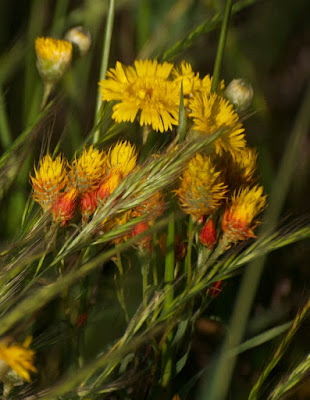



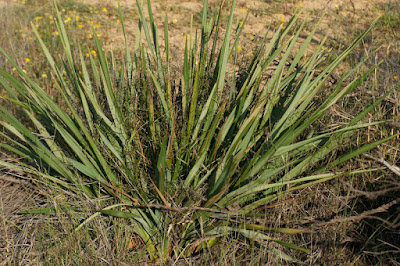

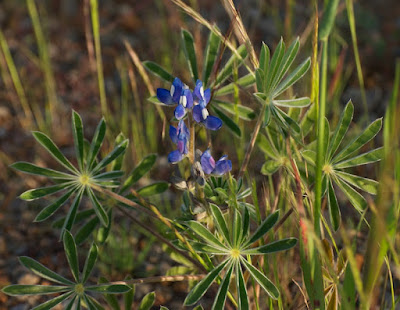


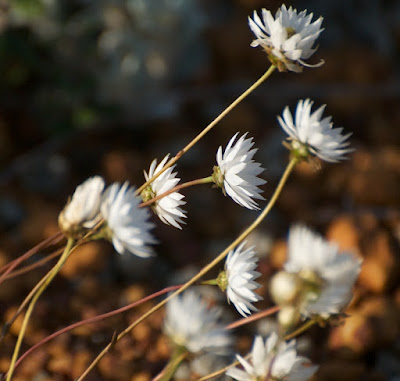





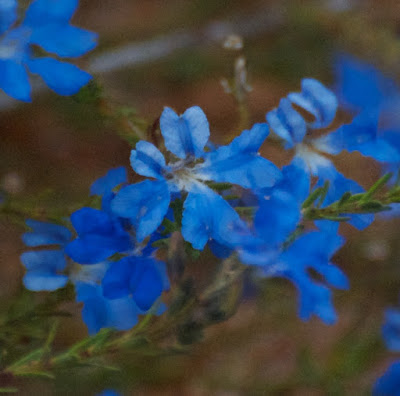






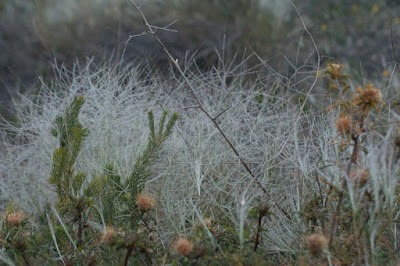












No comments:
Post a Comment